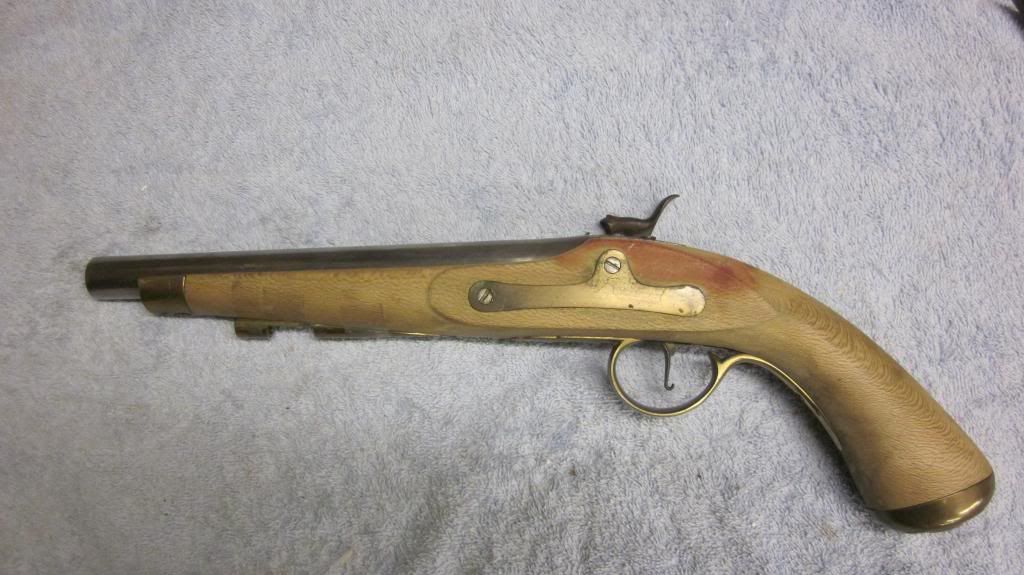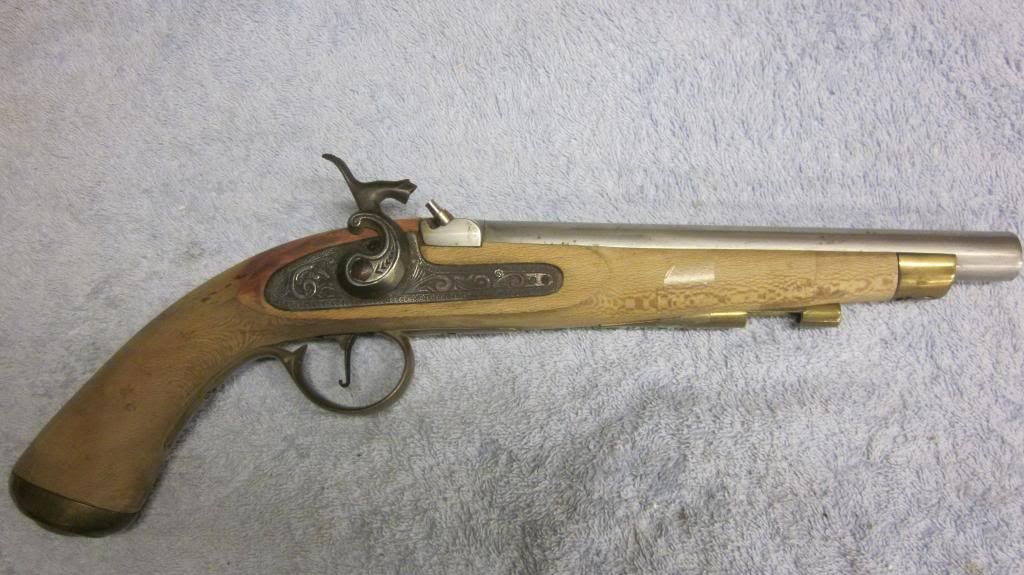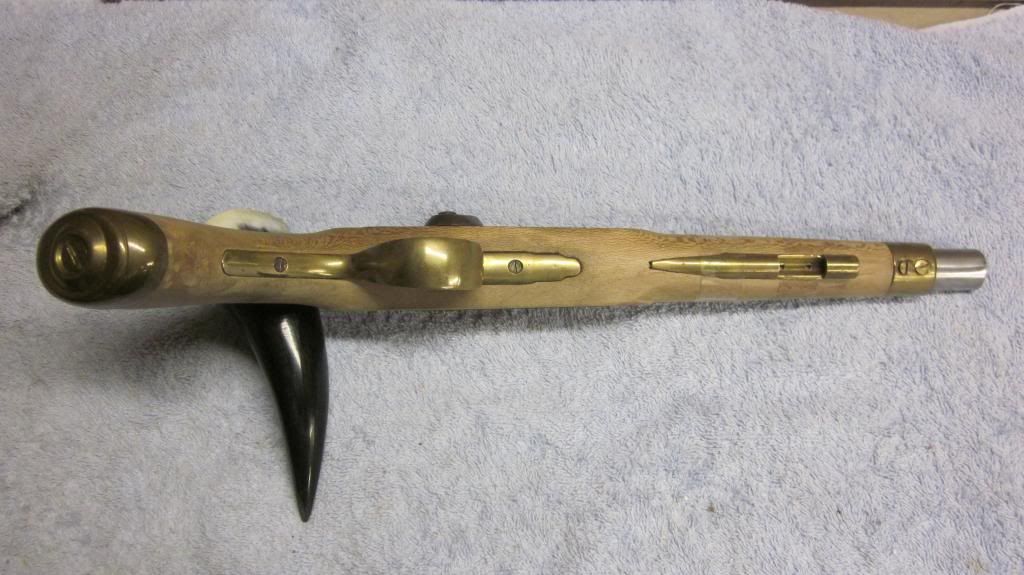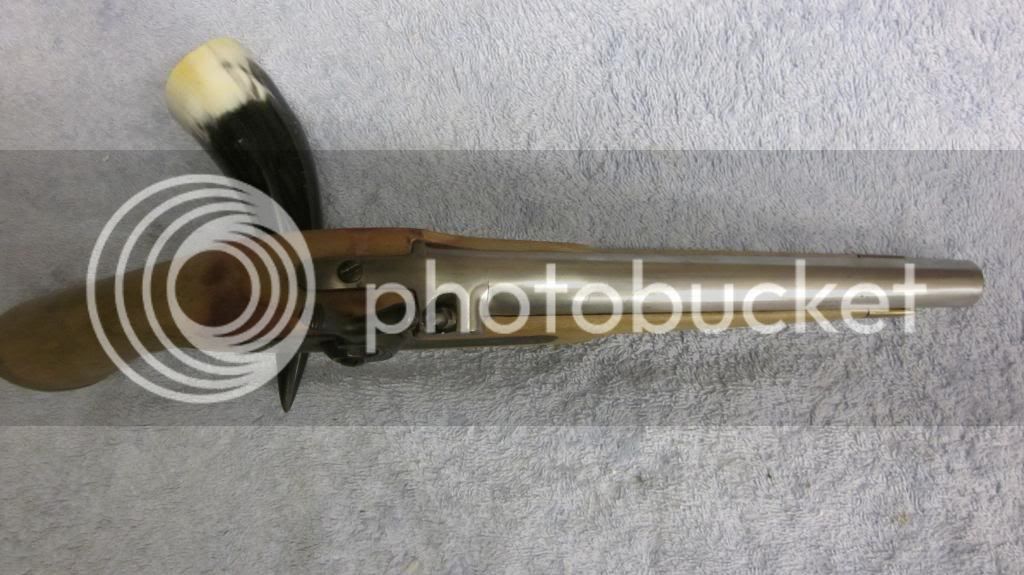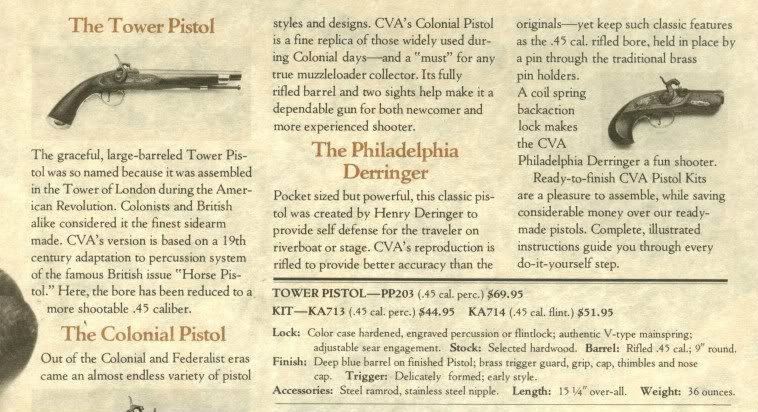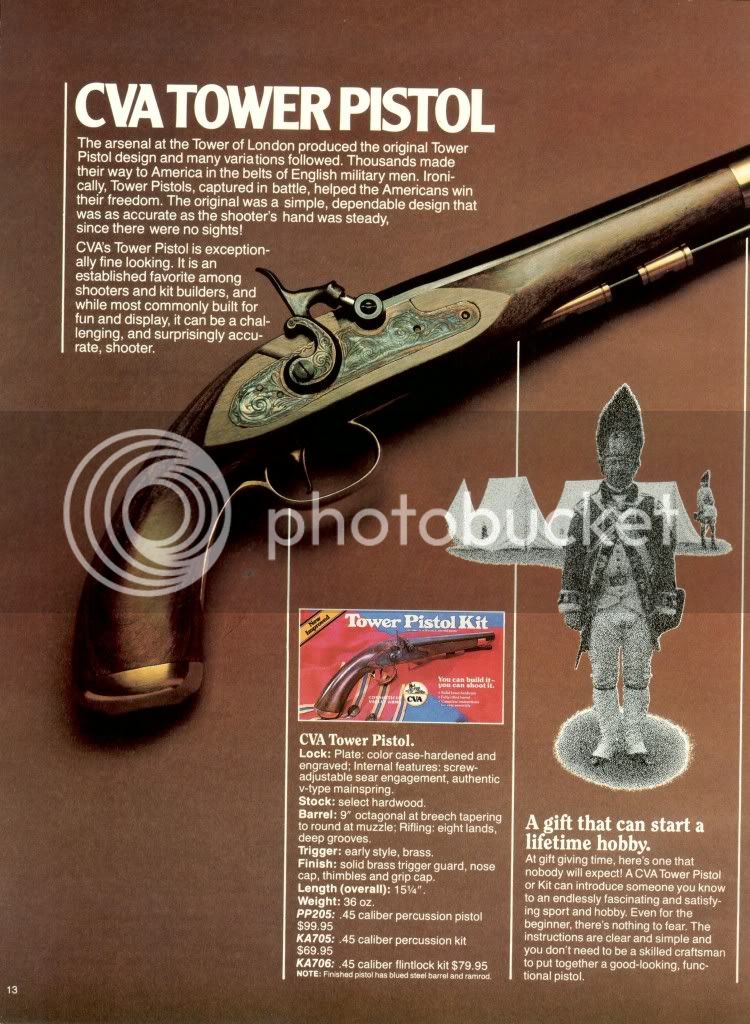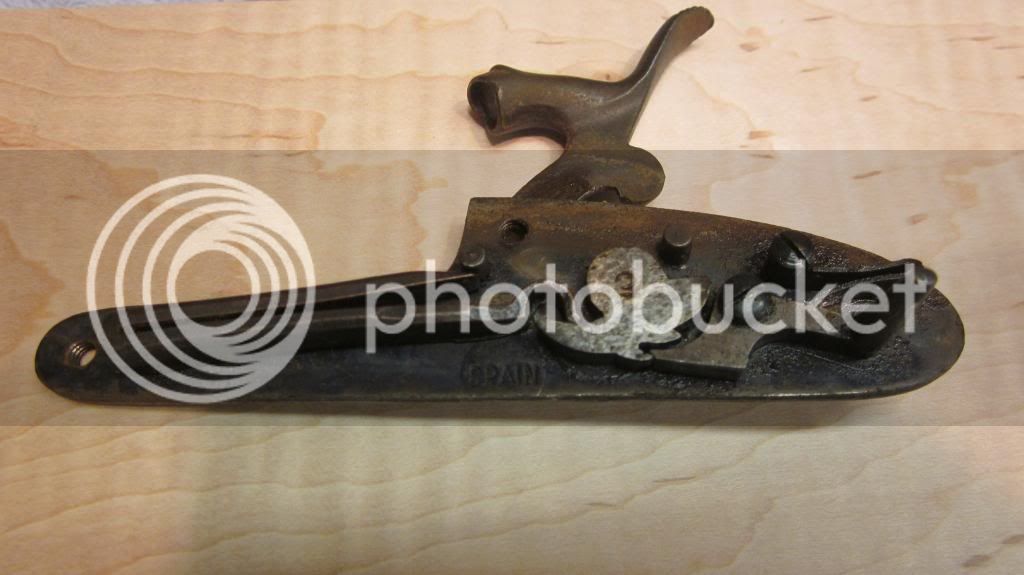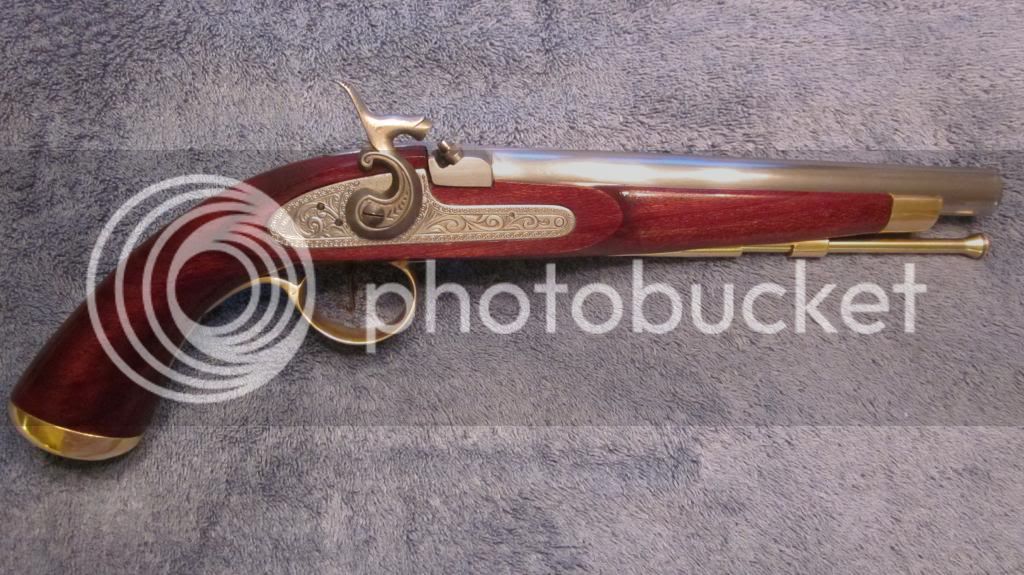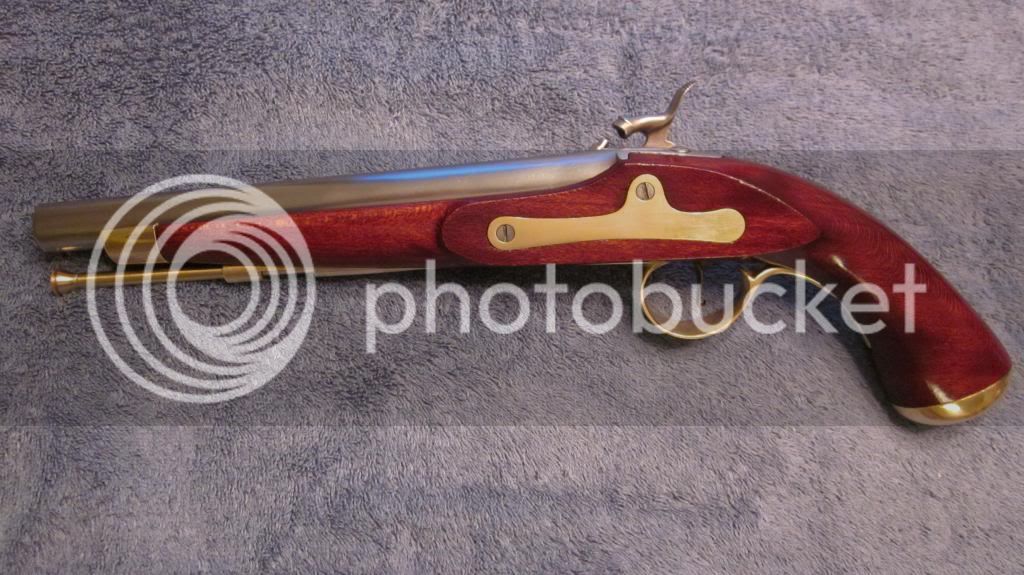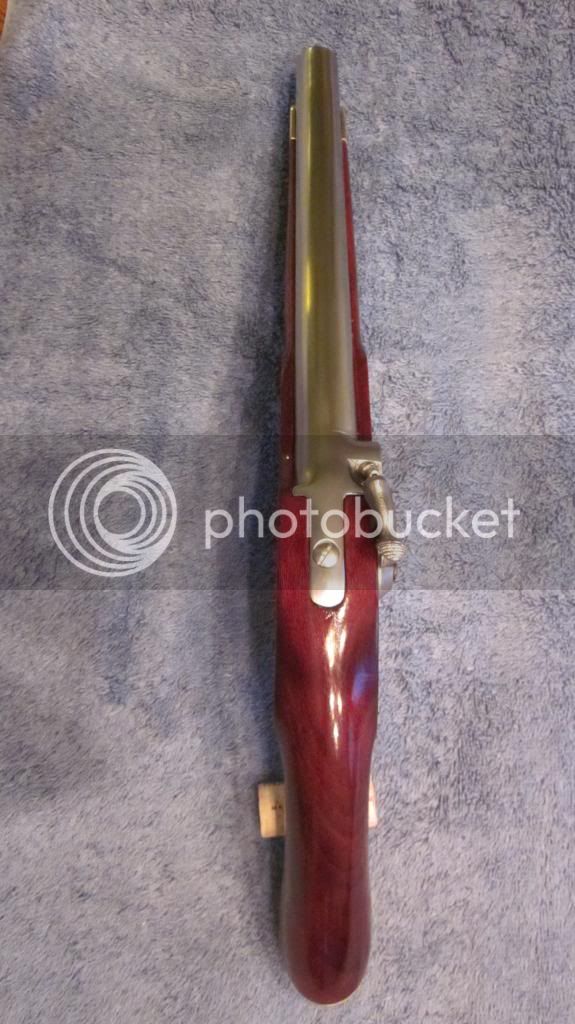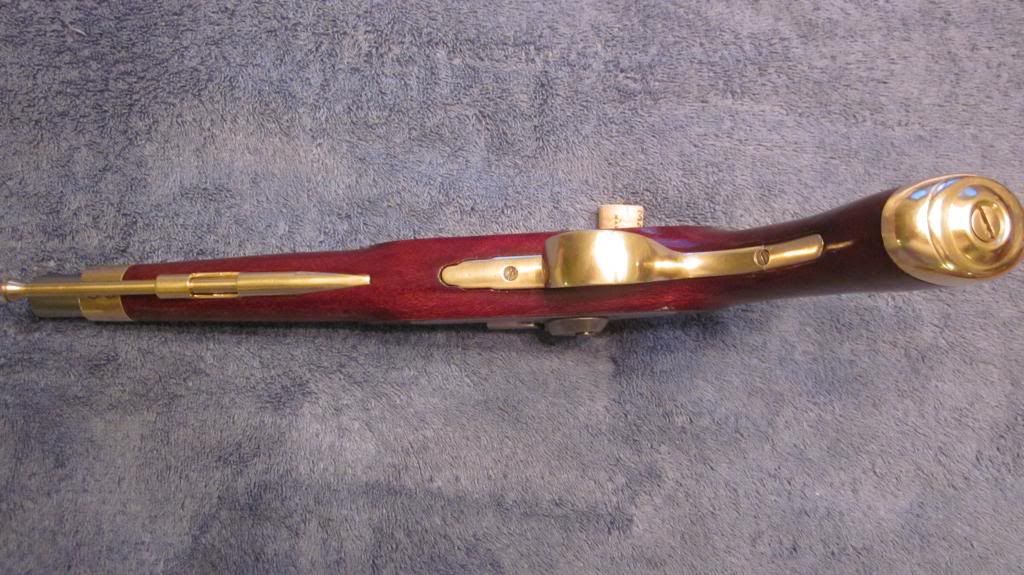I just aquired this pistol. I was told it was my grandfathers. It seems to be an unfinished kit gun but has no markings anywhere except the back of the lock plate says "Spain" on it. I believe it's .45 cal. I think it can be made shootable. Any info on it would be apperciated.
(Having upload problems, hang on) :cursing:
(Having upload problems, hang on) :cursing:




